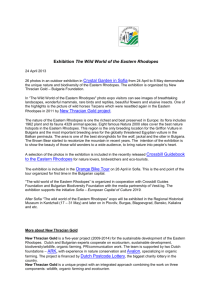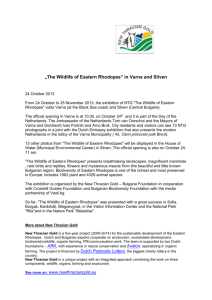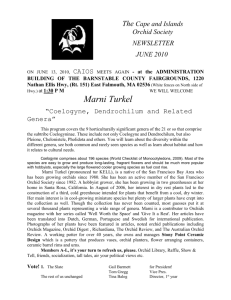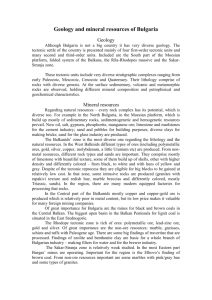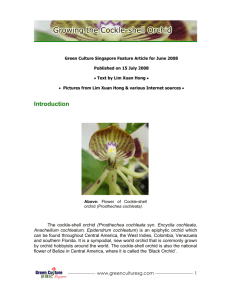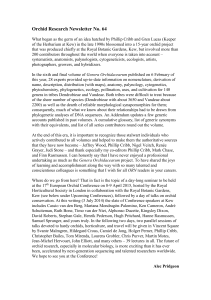Beautiful orchids are blooming in the Eastern Rhodopes
advertisement
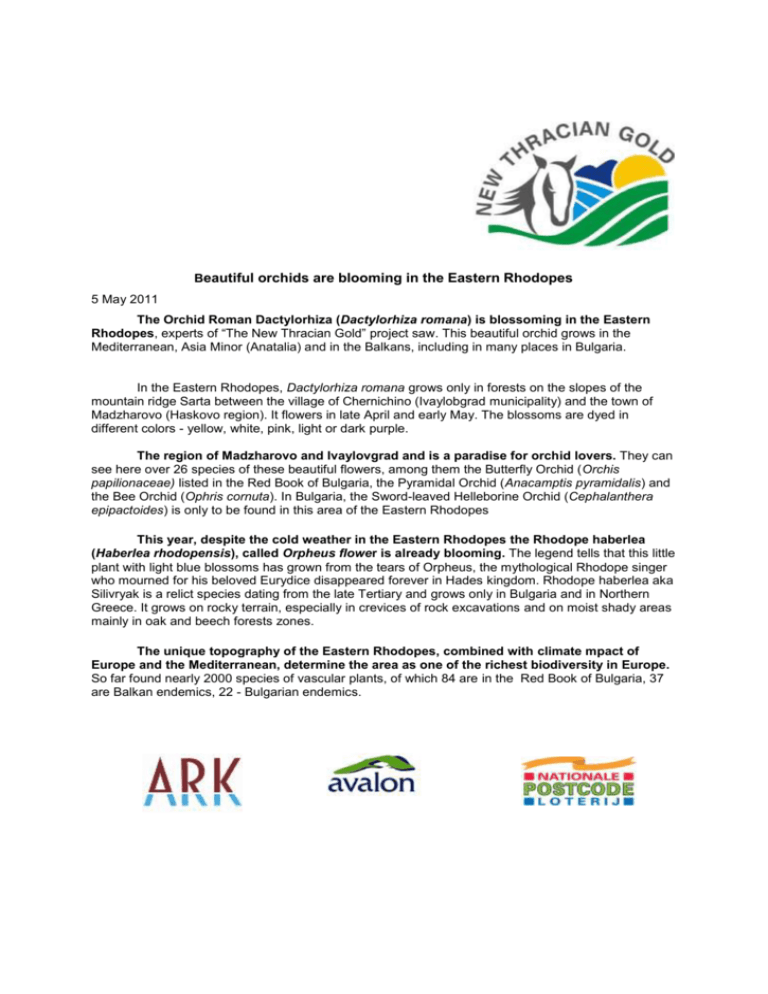
Beautiful orchids are blooming in the Eastern Rhodopes 5 May 2011 The Orchid Roman Dactylorhiza (Dactylorhiza romana) is blossoming in the Eastern Rhodopes, experts of “The New Thracian Gold” project saw. This beautiful orchid grows in the Mediterranean, Asia Minor (Anatalia) and in the Balkans, including in many places in Bulgaria. In the Eastern Rhodopes, Dactylorhiza romana grows only in forests on the slopes of the mountain ridge Sarta between the village of Chernichino (Ivaylobgrad municipality) and the town of Madzharovo (Haskovo region). It flowers in late April and early May. The blossoms are dyed in different colors - yellow, white, pink, light or dark purple. The region of Madzharovo and Ivaylovgrad and is a paradise for orchid lovers. They can see here over 26 species of these beautiful flowers, among them the Butterfly Orchid (Orchis papilionaceaе) listed in the Red Book of Bulgaria, the Pyramidal Orchid (Anacamptis pyramidalis) and the Bee Orchid (Ophris cornuta). In Bulgaria, the Sword-leaved Helleborine Orchid (Cephalanthera epipactoides) is only to be found in this area of the Eastern Rhodopes This year, despite the cold weather in the Eastern Rhodopes the Rhodope haberlea (Haberlea rhodopensis), called Orpheus flower is already blooming. The legend tells that this little plant with light blue blossoms has grown from the tears of Orpheus, the mythological Rhodope singer who mourned for his beloved Eurydice disappeared forever in Hades kingdom. Rhodope haberlea aka Silivryak is a relict species dating from the late Tertiary and grows only in Bulgaria and in Northern Greece. It grows on rocky terrain, especially in crevices of rock excavations and on moist shady areas mainly in oak and beech forests zones. The unique topography of the Eastern Rhodopes, combined with climate mpact of Europe and the Mediterranean, determine the area as one of the richest biodiversity in Europe. So far found nearly 2000 species of vascular plants, of which 84 are in the Red Book of Bulgaria, 37 are Balkan endemics, 22 - Bulgarian endemics.
